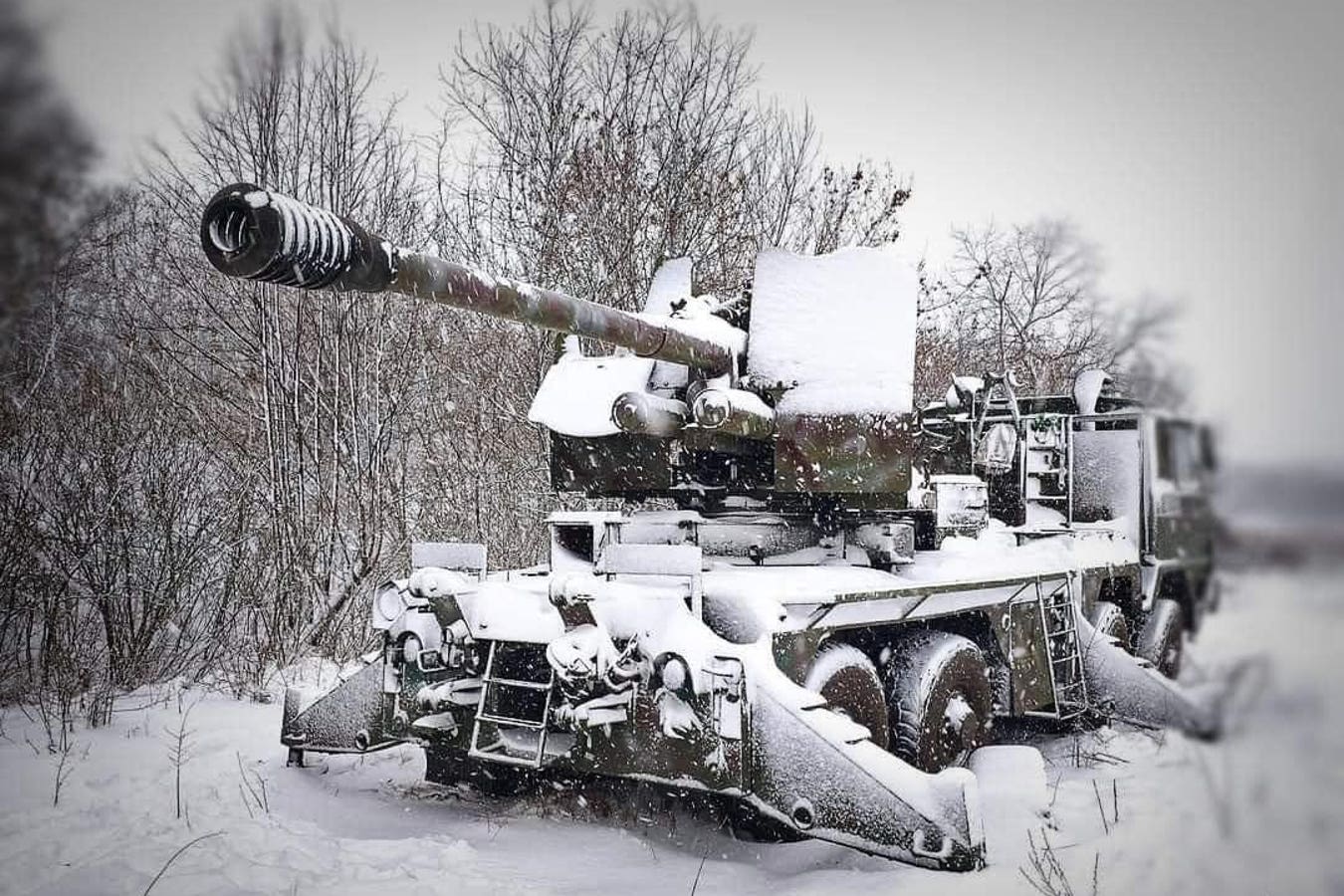Russia’s wider war on Ukraine is, more than anything, an artillery war. More to the point, it’s an artillery ammunition war. The army with the steadiest supply of shells for its biggest guns has the advantage before the first tank or fighting vehicle even rolls out.
Which is why it’s a crisis that, according to Ukrainian president Volodymyr Zelensky, “warehouses are empty” and supplies of the best, NATO-standard 155-millimeter shells are running low.
And it’s why one Ukrainian territorial defense brigade has been bolting 75-year-old howitzers to modern utility trucks to create a whole new type of mobile artillery. The 1940s-vintage KS-19 guns lack the range of, say, a new French-made Caesar wheeled howitzer.
But the KS-19 fires 100-millimeter shells. So the 241st Territorial Defense Brigade, so far the only confirmed front-line user of self-propelled KS-19s, doesn’t have to compete for ammo with brigades whose own guns fire the most in-demand 155-millimeter shells.
Bolting old guns to new trucks is one way Ukraine is addressing its artillery ammo crisis while it prays for an industrial miracle to send mana from Heaven in the form of a million or so 155-millimeter rounds.
The KS-19 isn’t a bad gun. It’s just an old one. Entering Soviet service in 1947, the 10-ton, towed KS-19 primarily functioned as an anti-aircraft weapon. But while it was designed to lob high-explosive shells at targets in the air, up to five miles high and 13 miles away, there’s no reason it can’t toss the same shells at targets on the ground.
The KS-19’s 35-pound shell travels at 1,100 yards per second. “Effective against light armor and other ground targets,” is how the U.S. Central Intelligence Agency described the gun in 1969.
The Ukrainian army inherited KS-19s from the Soviet army when the latter quit Ukraine in 1991. The KS-19s lingered in storage until Russia widened its war on Ukraine starting in February 2022.
It may have seemed, early on, that the Ukrainians strictly were using the aging KS-19s for gunner-training. Then this fall, photos and videos circulated online depicting two models of Czech-made Tatra heavy-duty trucks with KS-19s bolted to their cargo beds.
Integrating a KS-19 onto a flatbed truck solves one of the gun’s major flaws: its mobility. An artillery crew normally would tow a KS-19 to a firing position, unhitch it, aim it, fire it then hitch it up again and tow it away. The hitching and unhitching could add minutes to the time it takes a crew to shoot and scoot—and escape possible return fire.
That the Ukrainians would bolt their KS-19s to Tatra trucks should come as no surprise. The eight-wheel Czech truck is popular in the Ukrainian armed forces. The Ukrainians use Tatras as the basis for rocket-launchers as well as for the new, locally-built 2S22 self-propelled howitzer.
Indeed, the self-propelled KS-19 in essence is a 2S22 but with a 100-millimeter gun instead of a more powerful, farther-firing 155-millimeter gun. Both are manually-loaded. And in practice, the crews of both howitzers rely on small drones for targeting.
It’s not clear how many KS-19s the Ukrainian army has, and how many it might attach to Tatras to produce 100-millimeter self-propelled howitzers. It’s worth noting, however, that at least two different KS-19 SPHs have appeared in service with the 241st Brigade in just the last month or so.
And if the old-new mobile guns haven’t already fired in anger, they should do so soon. As recently as this fall, the 241st Brigade was on the front line near Bakhmut, where Ukrainian brigades very slowly have been advancing into territory the Russians occupied in the spring.
Read the full article here





